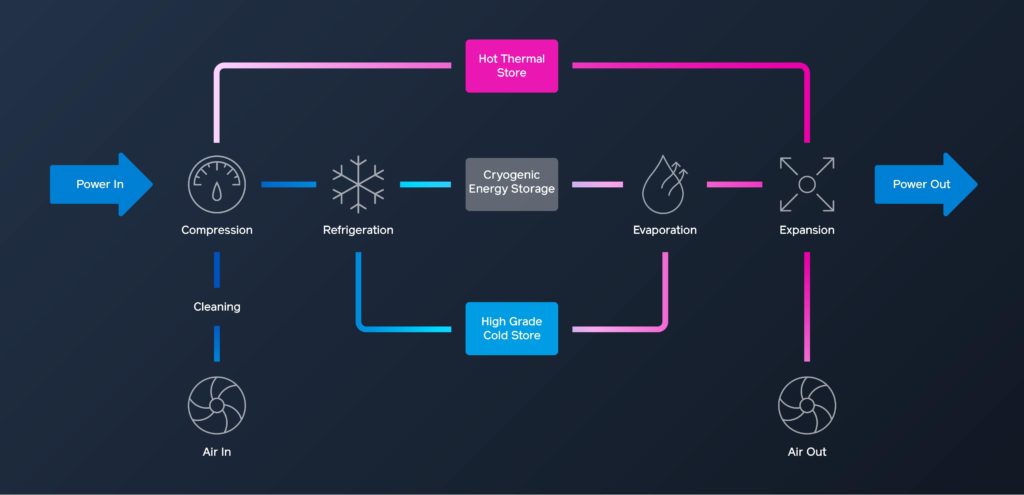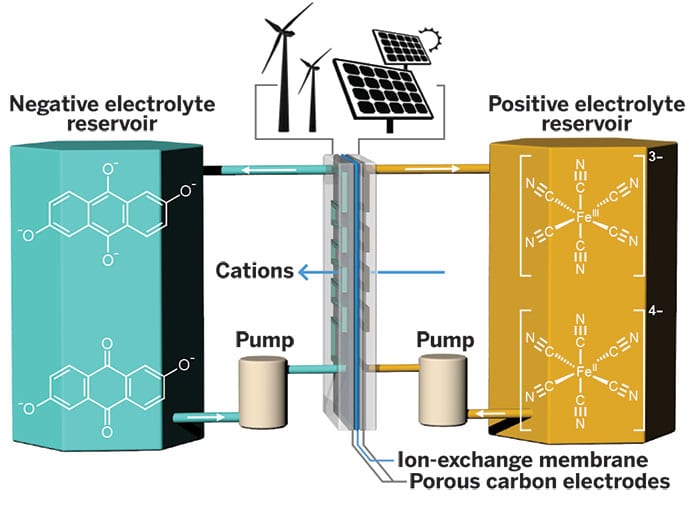The rise of renewable energy has exposed a new problem: our lack of energy storage solutions. From lithium ion batteries to liquid air, Earth.Org reviews the battery of the future.
—
Since the Industrial Revolution, the world’s energy demand has grown exponentially, and fossil fuels have been the answer to our needs. However, their use also precipitated a climate emergency, as three-quarters of global greenhouse gas emissions come from fossil fuel combustion. Today, renewable energy, composed of solar, wind and hydropower, provides us with a more sustainable alternative as we attempt to decarbonize our society.
Their global capacity grew by ~150% from 1966 to 1999, but in the past 20 years, it exploded by ~520% (OurWorldInData.com). Its competitive prices make it attractive to investors, all while checking the increasingly important box of “clean energy”, but there are yet hurdles to overcome.
Where do we put all the energy?
By its nature, renewable energy provides only an intermittent supply, but with its growth in the energy mix and limited storage capacity, things get complicated. Despite the stable appearance of our energy supply from the consumer’s point of view, a significant effort is made by network operators to guarantee demand is met. A careful balancing act achieves our needs at the moment, but there is a lot of room for improvement and this will likely be fuelled by improvements in the energy storage sector.
Here are the best candidates for the battery of the future.
Pump Hydro Storage
Currently, the grid is mainly supplied by natural gas combustion and pumped hydro, the most popular form of storage today, accounting for ~94% of installed capacity. It consists in pumping water up, then using the pull of gravity to regenerate energy when needed. With an efficiency of 70-80%, energy is lost in the process, but it can be tapped into any time, especially peak demand hours. Its main disadvantage is the need for geographical height and water availability, thus restricting it to mountainous areas and often encountering environmental restrictions. It’s response time is also slower than that of batteries.
Lithium Ion Batteries
The staple battery technology today is the lithium-ion: they’re in our phones, computers, electric cars and increasingly in our energy grids. They provide power in milliseconds, and thus make them very convenient for consumer electronics, but they remain far from cheap when deployed at scale (although prices are dropping fast). This battery benefits from big production scale thanks to its popularity but the typical lithium-ion battery storage plant can only fuel the grid from 30-90 minutes. Life-span has also been a problem, but CATL, the chinese company that makes electric car batteries for the likes of Tesla and Volkswagen, says they’ve made an energy pack that lasts 16 years. It remains to be seen whether this is an exception, because most of these batteries perish in 2 to 3 years.
Compressed Air
Compressed air is another interesting technology for energy storage. The idea is to squash air into a container, to later release it and activate turbines that regenerate the energy put into its compression. The first utility-scale project was inaugurated in 1978, and has successfully run since, but its efficiency is only around 40%. More recent projects, like Hydrostor’s system, reach the 60% mark.

Source: Hydrostor.
Highview Power is a 16 year old UK-based company that innovated upon the compressed-air method to develop the cryogenic energy storage technique. It consists in turning air into liquid by cooling it down to -196°C, allowing a 700-fold reduction in volume, which can be reheated and expanded to drive turbines without combustion.

Source: Highview Power.
As the air is frozen and compressed, the excess heat is stored. When transforming the liquid back into air by evaporation, the cold emitted is also stored. The previously stored heat can then be reused for the expansion process, just as the stored cold can be reused for the refrigeration. This clever system boosts the technology’s efficiency from a paltry 25% to a viable 60%.
Flow Batteries
A flow battery requires two large tanks with oppositely charged ion solutions that are pumped through a central system on separate sides of a membrane.

Source: C&EN – American Chemical Society.
Their storage capacity depends on tank size, and can therefore be scaled up quite easily, their efficiency is 70+%, they require no maintenance and are relatively safe (lithium-ion batteries are known to cause fires).
One of the most successful companies to employ the tech is Invinity Energy Systems, whose installations can be found in over 40 locations in 5 continents. However, they opted to use a relatively rare metal called Vanadium, whose supply and volatile price could affect projects down the line.
A more robust calcium,sulfur and antimony-based flow battery was designed by MIT’s Prof. Sadoway, which received immediate funding from Bill Gates. This battery-type will likely become an attractive option in the future; as of yet it is far from ready. Prof. Sadoway says: “This is tough tech, it’s heavy industry, it’s not like writing code. (…) This is really hard.”
Efficiency VS. Cost per megawatt/hour
Now that we’ve had a look at the most promising solutions on the market, the question is: which one do we pick?
One might think efficiency is the metric to look at, but the question any investor will actually ask is: “What is the cost per MWh?”. To help you understand, think of a battery storage plant just like a typical fossil fuel power plant: you have to include the facility’s construction, maintenance, and energy consumption (remember, there is always energy loss). This will yield the cost per unit of energy it can produce.
The staple pump hydro storage stands at US$200-260/MWh, though a recent interim study claims it could be much lower if it benefitted from the same legislative advantages as battery storage. Compressed-air storage can cost US$50-130/MWh, but needs certain geological formation to be built and relies on fossil fuels for its function. In comparison, Highview Power’s liquid air system boasts a US$146/MWh cost, while requiring relatively little surface area and having no other geographical limitations. Finally, lithium-ion prices per MWh dropped over 80% since 2012 to ~US$150/Wh since 2012, but only provides energy for short periods of time (though the scale and capacity of these plants is beginning to grow).
Despite competitive prices, it will be difficult for liquid air and other technologies to dethrone the lithium-ion battery in the near future. This is mainly because of its production scale, which has recently benefited from the rising demand for electric vehicles. The IEA expects it to remain on top till 2030 at least, despite the growing concern over fires at grid-scale storage plants. Hive Energy’s director Hugh Brenna says: “It’s like trying not to buy an iPhone” to the Financial Times. “It’s also more profitable to provide short-term energy storage to take advantage of differing power prices”.
Policy is a key factor
Global battery storage installation dropped in 2019, partly due to inefficient legislation for deployment and use. According to the IEA, they suffer from a lack of transparency and focus on technology types, rather than capacity and installation factors. This closes the market off to emerging systems like those described in this article, despite their readiness for deployment.
The Takeaway
Energy storage in the future is unlikely to rely on a single type of battery, and will rather rely on a combination of quick-response, high-debit tech and slower, high-capacity systems. Each option has its strengths and weaknesses that can depend on geography, so flexibility toward stacking multiple different types of storage is the way to go.
This article was written by Owen Mulhern. Cover photo by Danilo Alvesd on Unsplash
You might also like: Waste Management: China and the US










![The Statistics of Biodiversity Loss [2020 WWF Report]](https://u4d2z7k9.rocketcdn.me/wp-content/uploads/2020/12/lprwinkyTHB-544x306.jpg)





